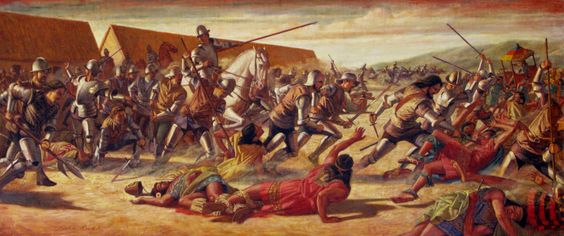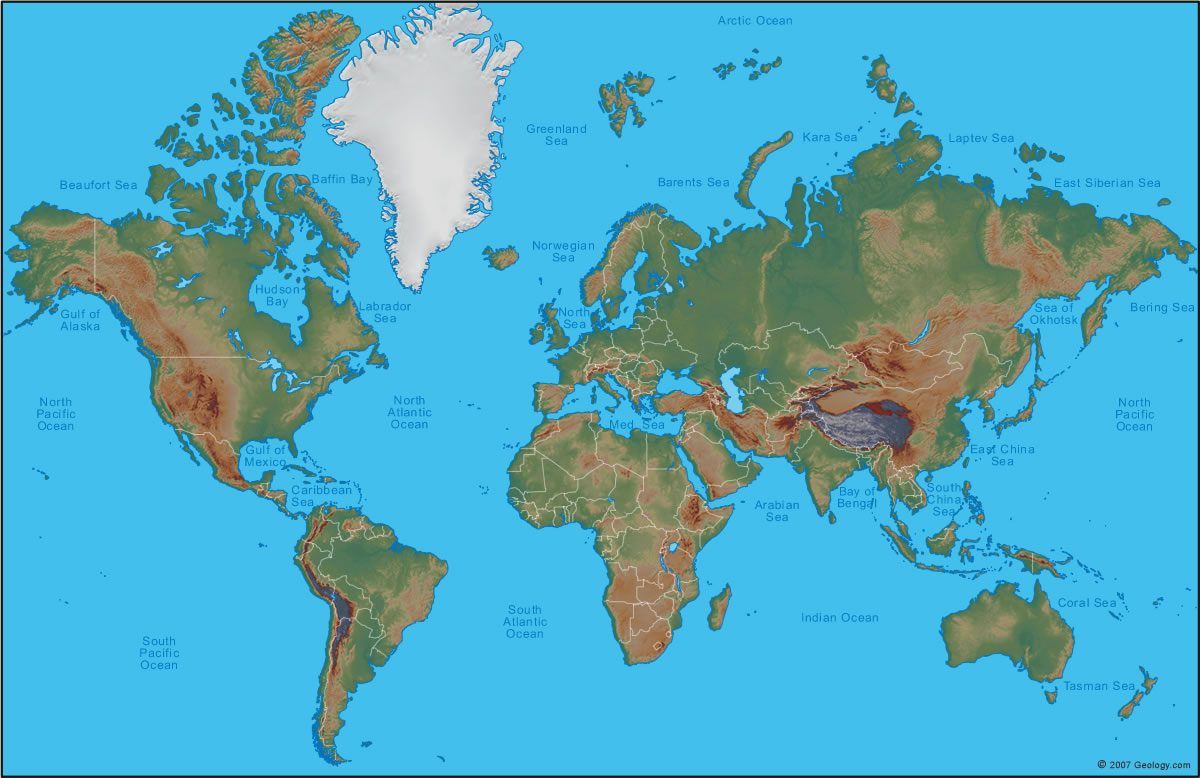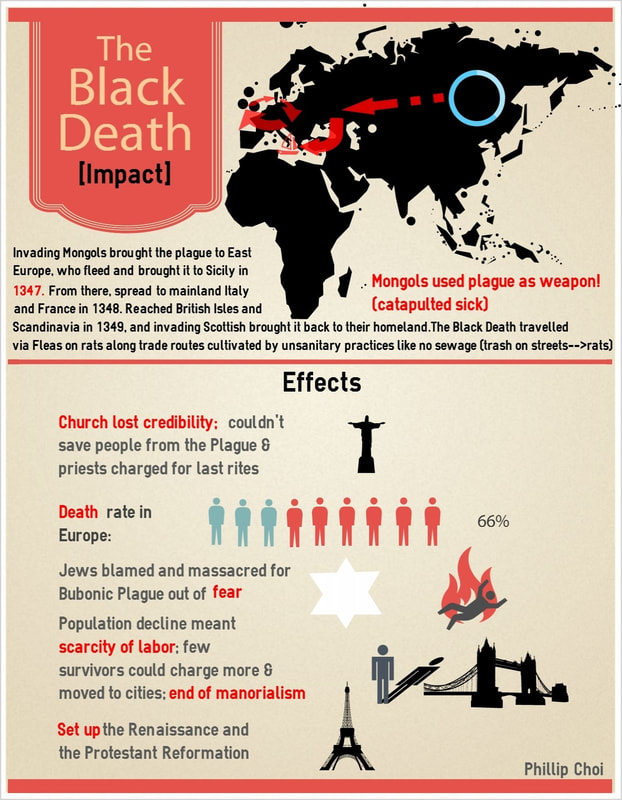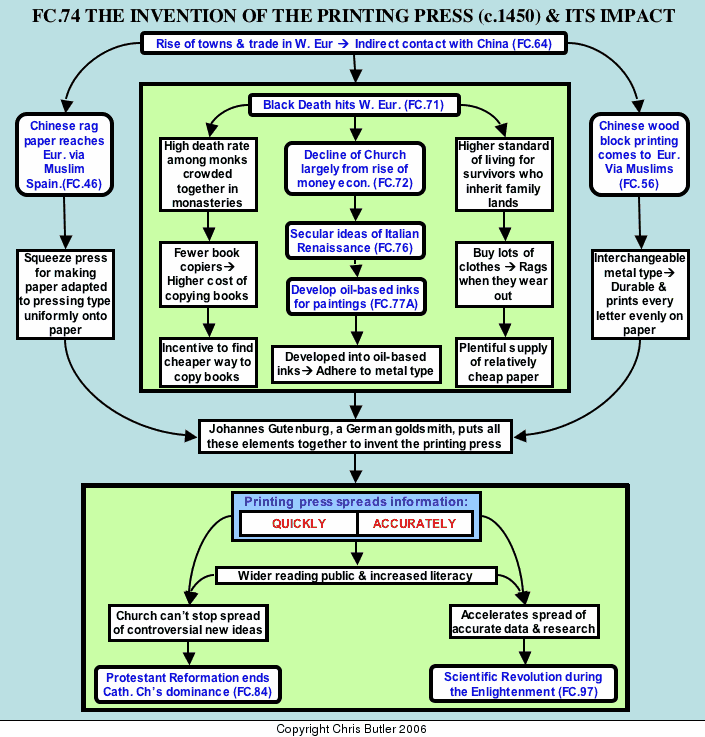04 How has globalization shaped the world?
What is Globalization? |
Containerization |
|
|
|
Do you know location and place?
In studying concepts of globalisation, it is important to understand time, place and space.
Try these quizzes to see what you know...and discover something that you didn't.
Try these quizzes to see what you know...and discover something that you didn't.
Why Early Globalization Matters
The impact of the Black Death and the Printing Press on Globalization
Political Interaction Case Study - Columbus' Journey to the Americas
|
|
|
What were the consequences of Columbus' voyage?

Assessing the impact of Columbus's voyages is not an easy task.
Disease and death was one consequence of Columbus's voyages. Pre-Columbian America had been isolated from many infections that had swept through Asia, Europe, and much of Africa. American Indians had been spared most of the diseases common to societies that raise livestock. The New World thus provided a fertile environment for epidemics of smallpox, influenza, and measles, which were most lethal to adults in their most productive years.
The eight million Arawak Indians, who lived on Hispaniola, site of the first Spanish New World colony, were reduced to ten thousand by 1520. Twenty-five million Indians in Central Mexico were reduced to 1.9 million by 1585. Indian populations in the Andes and in North America were also decimated.
The development of the African slave trade was another important consequence of Columbus's voyage. Within decades, Spain introduced black slaves and sugar plants into the New World. With the Indians seemingly on the path to extinction, the Spanish and Portuguese turned to African labor, who were used to mine gold and silver and to raise crops and livestock.
Columbus's voyages represent one of the major discontinuities in human history. His voyages truly represented a historical watershed, with vast repercussions for all aspects of life in both the Old World and the New. The year 1492 - perhaps more than any other year in modern history - was a truly landmark moment, carrying enormous implications for the natural environment and for the international economy.
Disease and death was one consequence of Columbus's voyages. Pre-Columbian America had been isolated from many infections that had swept through Asia, Europe, and much of Africa. American Indians had been spared most of the diseases common to societies that raise livestock. The New World thus provided a fertile environment for epidemics of smallpox, influenza, and measles, which were most lethal to adults in their most productive years.
The eight million Arawak Indians, who lived on Hispaniola, site of the first Spanish New World colony, were reduced to ten thousand by 1520. Twenty-five million Indians in Central Mexico were reduced to 1.9 million by 1585. Indian populations in the Andes and in North America were also decimated.
The development of the African slave trade was another important consequence of Columbus's voyage. Within decades, Spain introduced black slaves and sugar plants into the New World. With the Indians seemingly on the path to extinction, the Spanish and Portuguese turned to African labor, who were used to mine gold and silver and to raise crops and livestock.
Columbus's voyages represent one of the major discontinuities in human history. His voyages truly represented a historical watershed, with vast repercussions for all aspects of life in both the Old World and the New. The year 1492 - perhaps more than any other year in modern history - was a truly landmark moment, carrying enormous implications for the natural environment and for the international economy.
Analyzing Sources: OPVL
|
…(the Spaniards) grew more self-important every day and after awhile refused to walk any distance…(They) rode the backs of Indians is they were in a hurry or were carried on hammocks by Indians running in relays…(They) thought nothing of knifing Indians by tens and twenties and of cutting slices off them to test the sharpness of their blades… …They (Indians) suffered and died in the mines and other labors in desperate silence, knowing not a soul in the world to whom they could turn for help… …(In 1508) there were 60,000 people living on this island (Hispaniola), including the Indians; so that from 1494 to 1508, over three million people had perished from war, slavery, and the mines. Who in future generations will believe this? I myself writing it as a knowledgeable eyewitness can hardly believe it…”
Bartolome de las Casas, a young priest and later human rights activist who participated in the conquest of the New World |
ORIGIN: Bartolome de las Casas, a young priest. A witness to the Spanish Conquest of the Americas. We can assume that he was male and was probably taken on the exploration to spread Christianity among the natives.
PURPOSE: de las Casas appears to have been writing a record of the events, possibly in a journal or diary. Possibly he intended to share it with people back in Europe who would not have known about the events in the Americas. VALUE: This is a primary source, so he was actually an eye witness to these events. Even though he is Spanish he is saying negative things about the actions of the Conquistadors. As a priest it could be argued that he is trustworthy since men or God are supposed to be honest. LIMITATIONS: His account is very negative and mentions nothing of the benefits the Europeans brought to the New World. The source is only excerpt and not the complete document, so therefore some information is missing. |
Trade Issues
From your studies you know what one of the things that Columbus' voyage gave birth to was truly global trade. Watch the video below about global trade. Do you agree or disagree with its message?
Trade vs. Aid
THE BASICS – WHAT IS TRADE?
Trade is the exchange of goods, money and services between countries and regions. The goods made in a region and sold to other places and known as Exports (they Exit the country or region). The goods bought into a place from other regions are known as Imports (they come Into the country or region).
If value of exports for a country or region is greater than its imports it will have a trade surplus. If a region imports more than it sells then it will have a trade deficit.
- Most MEDCs and NICs import primary products which have low value and export high value manufactured goods an even higher value services.
- Most LEDCs export lower value primary products (such as cocoa, cotton etc.), this means that they struggle to raise standards of living in their countries because they do not have much foreign money coming in from trade. The price of primary goods also varies widely and producers can lose out massively, so the trade in a sense is unfair.
Fair Trade
This is a scheme designed to get a better deal for the producers of the primary products that MEDC countries need. The producers get access to the market for their goods. Fair Trade is an international movement and its influence is growing, more than 4,500 products now bear the fair trade mark, and 72% of the UK population recognize the Fair Trade logo. In addition, more than 7 million people in Africa, Asia and Latin America benefit from Fair Trade - farmers, farm workers, and their families.
THE BASICS – WHAT IS AID?
Aid is basically a form of help given from one country to another; or one person to another, or from a charity (often called Non-Government Organisations or NGOs) to a country or region. It is most likely that you will have given aid at some point in your life! Aid can be given in the short term for emergencies, like during the 2004 Boxing Day Tsunami, when money poured into South East Asia to help the victims and the sick. Development aid is longer term, and seeks to help people in poorer countries raise their standard of living.
The CENTRAL CORE ISSUE here with this topic is how we try to reduce these inequalities so that the poor are not so poor. Do we promote the values of TRADE, and in particular, globalized free trade, or do we try to assist the poorest nations in the world through AID?
Here are some samples of student work from 2017.
|
|
|



